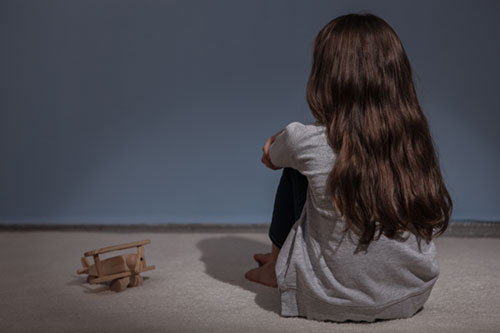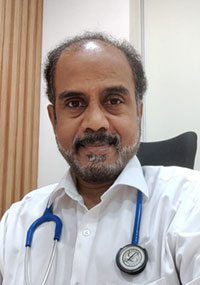WORLD SUICIDE PREVENTION DAY 2023
“CREATING HOPE THROUGH ACTION”

Suicide is one of the top three causes of death among youth globally and it is one of the preventable adverse events medically and socially, especially in older children, adolescents and young adults. There is a common myth that childhood confers relative immunity to suicidal attitudes based on two false notions: first, children are free from stress and problems and secondly, they are not mature enough to think or plan suicides. However research says that they have a thorough understanding of death and suicide as early as grade 3, i.e., 8 years of age. As per NCRB [2021] data, 13,120 students commit suicide [8% of all suicide deaths of 1,64,000].
In this article, we will be discussing the importance, of some case scenarios, risk factors, how to identify early, and some preventive strategies, with more importance to adolescents and young adults. As adolescence is a critical developmental period of life, children in this age group become more vulnerable to self-harm behaviour and suicidal tendencies.
For practical purposes, let us see what the terms mean really.
SUICIDE is a self-inflicted death with either explicit or implicit evidence that the person intended to die.
SUICIDE ATTEMPT is a self-injurious behaviour that is non-fatal with evidence of either explicit or implicit intention to die [also, a cry for help].
Both commonly have “the intention to die” with which we are all concerned and it’s also a future predictor for further risk of life.
Real Life Case Scenarios:
A 13-year-old boy was brought to the child guidance clinic by his father, with a history of repeated suicide attempts by the child for the past 2-3 months. On initial history, the boy was developmentally normal with average school performance, with a history of hyperactivity and some inattention, difficulty with maths subject, was frequently beaten by teachers, parents and tuition miss for his hyperactivity and poor scores in maths. The child became frustrated, tried to evade tuition, then school itself. This added more punishments again and he became more silent & withdrawn, not going for play activities and reduced interest in taking even his favourite food items. After a complete clinical evaluation with a few psychology test sessions, he was diagnosed with ADHD [attention deficit hyperactivity disorder] with a specific learning disability – maths [dyscalculia] with secondary depression and suicide attempts. He was treated successfully, thanks to the efforts made to refer this child by the family doctor, a paediatrician.
Another 15-year-old boy was brought in an unresponsive state to a nearby private clinic by the horrified and crying mother saying that the child was badly beaten by his alcohol-addicted father while he was playing video games in a nearby internet centre (with permission from his mother). The child came back home, half an hour after crying and went to the rest room. As there was no response to calls, the mother broke the door and saw the boy hanging with the plastic rope used to dry clothes and he was rushed to the clinic. But unfortunately, there was no sign of life and he was referred to the nearby medical college hospital where he was declared ‘brought dead’.
So, let us now discuss the RISK FACTORS for suicide in older children and adolescents:
- Mental illnesses like depression, personality disorders, schizophrenia, substance use disorders, anxiety disorders and OCD [contribute to nearly 60-80% of cases].
- Substance use habits with behaviour problems.
- Dysfunctional family environment like parental discord and divorce, alcohol addiction in the father, financial stress in the family, psychiatric illness in parents, punitive parents, etc.
- Inability to cope with academic challenges and competitive exams and other life stressors, lack of problem-solving skills and inability to handle emotional stress.
- Victims of child neglect and more so, physical-emotional-sexual abuse [common in both boys and girls].
- Low self-esteem, undue parental pressure to achieve, and poor emotional and moral support from the school environment.
- Family history of suicide and in near and dear ones like friends, school mates and loss of loved ones due to any other cause like disease or accidents.
- Excess internet use, online gaming and social media activities make them risky for “cyber suicide”, a rapidly emerging public health hazard.
All these factors make them more vulnerable and increase the risk of suicidal behaviours which everyone of us should be aware of.
How to Identify Early:
It is our responsibility and diligent duty to observe our children and adolescents closely without interfering with their autonomy in a friendly manner for the following signs and symptoms:
- Slow or sudden decline in school performances in a child who was otherwise doing well.
- Being withdrawn into his room and not interacting much at home and school.
- Reduced interest in usual interesting activities like play, food intake and outings.
- Excess sleep or sleeplessness and being dull and responding poorly to our interactions.
- Spending more time on internet activities, not allowing parents inside the room, or getting irritable and angry when the net connection is interrupted; also, spending more money online.
- Talking to self, smiling or laughing to self, gesturing activity when alone, and preoccupied even at family dinner time; disturbed sleep pattern; excess pacing inside room or halls; spending more time in bathrooms and excess washing activities.
We have to be more watchful of these symptoms and signs in our children and especially adolescents always – as
“Eyes do not see what the Mind does not know.”
What to Do? . . . “Our Role”
As parents, teachers and primary care physicians, we need to focus on the high-risk and vulnerable children and take appropriate remedial actions.
As we have seen in the two case scenarios, we need to have two kinds of approaches:
- Early identification and treatment of neuro-developmental problems and mental illness.
- Train and nourish children in “life skills” and “positive attitudes” towards challenges [more role by teachers and then parents].
Because, in the first child, we [parents and teachers] should have identified the ADHD, learning difficulty and subsequent depression earlier and referred the child to the psychiatrist or paediatrician for evaluation and management, so that the child would not have become depressed and attempted suicide.
In the second child, first the family should have taken steps to treat the father for alcohol addiction to prevent child abuse and then the child was not trained to cope with stress & emotions and had committed an impulsive suicidal act and ended his life pathetically.
Early Identification:
(Neuro-Developmental & Psychiatric Illness):
Consult the paediatrician or family physician or psychiatrist immediately if you observe any of the following in your children and adolescents.
- Being hyperactive and lack of attention at home, school activities and also social gatherings.
- Inability to get good marks despite of adequate reading and extra coaching; but good in other activities like play or art.
- Having new friends, not coming back home in time, hanging out late at night.
- Telling more lies, demanding money and stealing habits.
- Slowly or suddenly getting withdrawn, dull and gloomy in mood, not eating properly, less sleep or excess sleep [pattern change], having reduced energy, repeated physical complaints like headache, abdomen pain, etc. and school refusal.
- Being very quiet or angry for no reason, talking and smiling or laughing to self, fear coming out of home, gesturing alone, not believing anyone like neighbours or friends or even family members, poor self-care activities like bathing and dressing sense.
Do Away with Stigma:
The main hurdle to identifying and accepting psychological problems in our kids and family is the ‘stigma about mental illness’ and visiting a psychiatrist. There should be health education/awareness about the “body and mind complex” in a human being and both are equally important for a healthy life; like physical illness is treated, psychological issues should also be addressed immediately without any stigma, thereby avoiding worsening of illness and fatal situations like suicides.
Imparting Life Skills and Positive Attitude
We have a set of 10 life skills as proposed by the WHO [World Health Organization] given below:
ESSENTIAL LIFE SKILLS [10] are categorised as:
EMOTIONAL SKILLS like
- Self-awareness
- Coping with emotions
- Coping with stress
COGNITIVE SKILLS like
- Problem solving
- Decision making
- Critical thinking
- Creative thinking
SOCIAL SKILLS like
- Empathy
- Effective communication
- Interpersonal skills
Nourishing POSITIVE ATTITUDES is naturally facilitated by involving children mainly in extracurricular activities like SPORTS & ART activities with equal importance to academic activities right from an early age so that when they become adolescents or young adults, they know the nuances of facing any challenges in life.
SPORTS involves a positive sportsman’s attitude which incorporates many life skills like decision making, problem solving, creative thinking, effective communication, empathy and interpersonal skills with team-mates and learning discipline, systematic approach in an organized manner; coping with stress and emotions from their coaches when there is a lost or poorly performed match; upskilling their abilities in sports and games by more intense practices – all these will be applied to difficult life situations naturally.
ART activities like classical and western dances, musical talents like vocal and instrument playing, drawing and painting activities, acting and drama interests, etc. effortlessly make them more organised and focussed on their passions as well as provide many enriching life skills like creative thinking, critical thinking & analysing their own performances and others to improvise, effective communication both verbally and non-verbally and hence, good interpersonal relationship skills, which will be very useful for a happy and successful life.
As this year’s theme for “World Suicide Prevention Day – 10.09.2023” is – CREATING HOPE THROUGH ACTION, we doctors, parents, teachers and policymakers need to ponder over these points and concepts discussed to instill hope and good life approaches in our younger generation, for prevention and a significant reduction in suicide rates in our country and for them to be happy, healthy and successful in life.
Love All, Serve All
Help Ever, Hurt Never
Be Good, Do Good

Dr. S. Neelakandan, M.D (Psy), D.C.H.
Senior Asst. Prof., IMH, MMC & Senior Consultant – Psychiatry,
Kauvery Hospital Chennai
